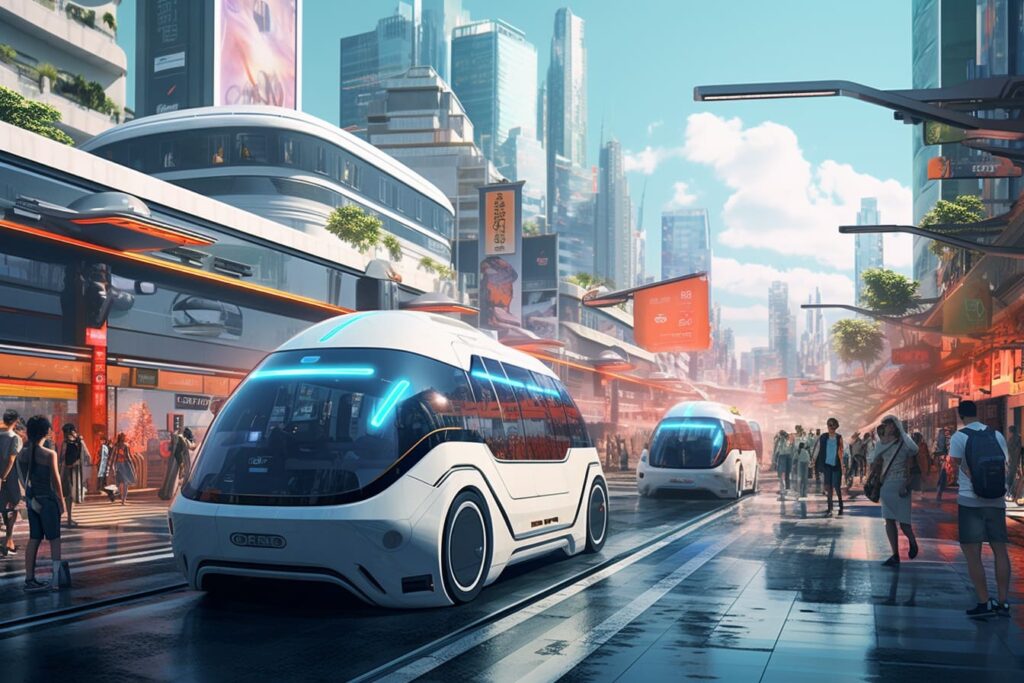Imagine stepping outside and seeing delivery bots zipping down sidewalks, AI-powered traffic systems controlling city flow, and robotic assistants helping out in homes—not just as novelties, but as everyday realities.
Guess what? We’re already on our way.
Robots are no longer confined to factories or sci-fi movies. They’re moving into our homes, streets, and workplaces, changing the way we live, shop, and even commute. Some people see this as an exciting step toward a Jetsons-style future, while others are wondering, Are we really ready for a world run by machines?
Let’s explore how robots are becoming part of everyday life, what’s working, what’s not, and what’s next in the great robotic takeover (don’t worry, it’s mostly friendly).
The Rise of Home Robots: Helping Hands or Overpriced Toys?
For years, the closest thing most of us had to a home robot was a Roomba bumping into furniture. But today, smart home robotics are stepping up—offering everything from cleaning and security to companionship and elder care.
🤖 Household Robots You Might Already Know
| Robot Type | What It Does |
|---|---|
| Robot Vacuums & Mops | Roomba and its rivals keep floors clean—unless your pet thinks they’re an enemy. |
| AI-Powered Security Bots | Patrol homes, detect intruders, and send alerts to your phone. |
| Robot Pets & Companions | AI-powered cats, dogs, and even social robots for the elderly. |
| Smart Kitchen Assistants | AI fridges track food inventory and suggest recipes (yes, they judge your snack choices). |
| Personal AI Assistants | Interactive AI robots that can hold conversations, play music, and help with daily tasks. |
These robots aren’t perfect—many are still expensive, glitchy, or struggle with basic human logic (Why did my $1,000 robot vacuum just eat my shoelaces?). But the trend is clear: home automation is here to stay.

The Smart City Revolution: Are We Ready for AI on the Streets?
Beyond the home, robots and AI-driven automation are changing our cities—from self-driving taxis to robotic trash collectors. The vision? Safer, more efficient, and more sustainable urban living. The reality? Well… we’re still figuring that part out.
🚦 Where Robots Are Entering City Life
🚚 Autonomous Delivery Bots – Companies like Starship and Amazon are testing small robotic couriers for food and package deliveries.
🚖 Self-Driving Taxis – Waymo, Tesla, and others are racing to deploy fully driverless ride-sharing services.
🗑 Robotic Trash Collectors – AI-powered waste management systems that can sort recyclables and even take out the trash.
🚲 AI Traffic Control Systems – Smart intersections that reduce congestion by optimizing traffic lights in real time.
🏢 Automated Retail Stores – Cashier-less shopping where AI and robotics track inventory and automatically charge you when you leave (goodbye, checkout lines).
But… Do People Actually Trust Robots in Public?
That’s the real question. A lot of these technologies sound great in theory, but when people actually interact with them, the response is… mixed.
🤖 What’s Working:
✅ Robotic delivery services are catching on in some cities, especially for food and small packages.
✅ AI-driven traffic control is reducing congestion in pilot programs worldwide.
✅ Self-driving cars are making progress—but still require human oversight.
🚫 What’s Struggling:
❌ Many people don’t trust self-driving taxis yet (cue the horror stories of AI cars stopping in the middle of traffic).
❌ Delivery robots sometimes get stuck, lost, or vandalized (because, let’s be honest, people love messing with them).
❌ Not every city is built for automation, meaning sidewalk bots and self-driving vehicles are constantly facing real-world obstacles (like potholes and impatient pedestrians).
The Challenges: Not Everyone Loves a Robot Uprising
For every exciting advancement, there’s a set of real concerns about integrating robots into daily life.
⚠️ Key Challenges of an Automated World
🔹 Job Displacement – If robots take over routine tasks, what happens to human workers?
🔹 Privacy Issues – AI-powered street cameras and delivery bots are always watching—who owns that data?
🔹 Technical Limitations – Robots still struggle with unpredictable environments (e.g., navigating cities full of humans who don’t follow the rules).
🔹 Public Perception – Many people don’t trust AI systems—especially after incidents where robots failed, crashed, or made poor decisions.
And then there’s the wildcard factor: Humans love messing with robots. Whether it’s knocking over delivery bots or hacking self-checkout systems, the real challenge isn’t just teaching AI to work—it’s teaching humans to accept and respect it.
The Future: What’s Next for Home & City Robots?
🔮 More Advanced Home Assistants – Expect smarter, more interactive AI companions that go beyond vacuuming and security.
🔮 Better Public Safety & Accessibility – AI-driven emergency response bots and mobility aids for seniors and people with disabilities.
🔮 Autonomous Public Transit – Fully self-driving buses and trains that adapt to demand in real time.
🔮 AI-Integrated Smart Cities – Entire neighborhoods designed with automated delivery, traffic management, and surveillance systems built-in.
We’re not heading toward Blade Runner (probably), but we are on the verge of a world where robots aren’t just helpful—they’re essential. The question is: Are we ready for that?
Final Thoughts: Do You Want a Robot Neighbor?
Robots are becoming part of daily life, whether we like it or not. Some will make things easier, some will frustrate us beyond belief, and some will be wildly entertaining (because let’s be honest, watching a delivery bot struggle with a curb is kind of hilarious).
But as we move toward a more automated world, we have some big questions to answer:
🔹 How do we balance automation with human jobs?
🔹 Can we trust robots to navigate our homes and cities safely?
🔹 Will robots eventually become part of human communities—or always feel like outsiders?
One thing’s for sure: The robots are here. Now, we just have to figure out how to live with them.
What do you think? Are robots making our lives better, or are we moving too fast into automation? Let’s discuss!
